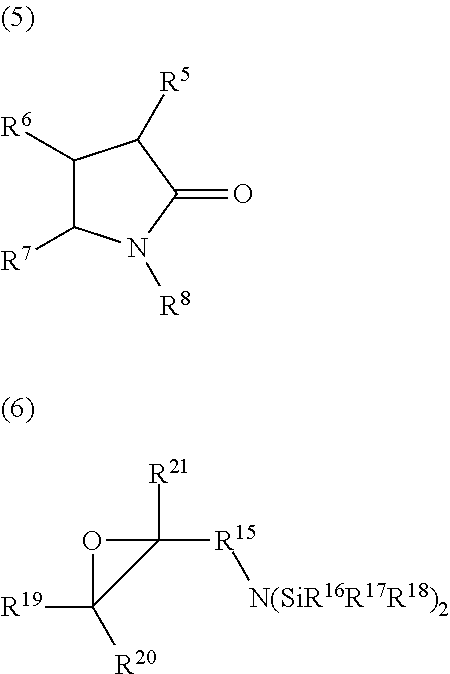Sulfur-crosslinkable rubber mixture
a crosslinking rubber and mixture technology, applied in the direction of tyre parts, tyre tread bands/patterns, tyre sidewalls, etc., can solve the problems of deterioration of rolling resistance, winter properties, wear behavior, decline of wet grip properties and/or tear properties of the mixture in question, and improve winter properties and/or handling behavior, the effect of improving rolling resistance behavior and wear behavior
- Summary
- Abstract
- Description
- Claims
- Application Information
AI Technical Summary
Benefits of technology
Problems solved by technology
Method used
Image
Examples
Embodiment Construction
[0123]The disclosure will now be explained in further detail by means of the comparative examples and exemplary embodiments summarized in Tables 1 and 2. Here, the mixtures marked with “E” are mixtures according to the invention, while the mixtures marked with “V” are comparison mixtures. In all of the mixing examples given in the Tables, the volume units are given in parts by weight with respect to 100 parts by weight of the total rubber (phr) or 100 parts by weight of silica (phf).
[0124]Mixture production was carried out under the usual conditions in three stages in a laboratory tangential mixer. Test pieces were produced from all of the mixtures by optimal vulcanization under pressure at 160° C., and these test pieces were used to determine the material properties typical for the rubber industry. The following test methods were used for testing of the test pieces described above:[0125]Shore A hardness (unit Shore A, abbreviated ShA) at room temperature (RT) according to DIN 53 50...
PUM
| Property | Measurement | Unit |
|---|---|---|
| Tg | aaaaa | aaaaa |
| glass transition temperature | aaaaa | aaaaa |
| Tg | aaaaa | aaaaa |
Abstract
Description
Claims
Application Information
 Login to View More
Login to View More - R&D
- Intellectual Property
- Life Sciences
- Materials
- Tech Scout
- Unparalleled Data Quality
- Higher Quality Content
- 60% Fewer Hallucinations
Browse by: Latest US Patents, China's latest patents, Technical Efficacy Thesaurus, Application Domain, Technology Topic, Popular Technical Reports.
© 2025 PatSnap. All rights reserved.Legal|Privacy policy|Modern Slavery Act Transparency Statement|Sitemap|About US| Contact US: help@patsnap.com

